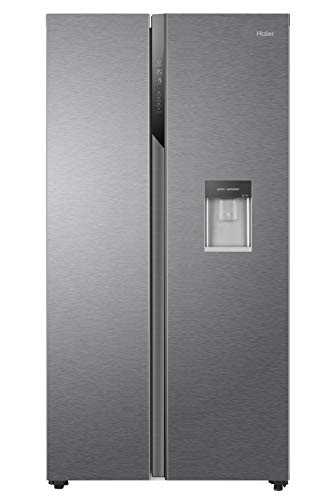16 Must-Follow Facebook Pages For Fridge UK Marketers

The Comprehensive Guide to Refrigerators in the UK
Fridges are a vital appliance in every home, serving a vital role in food preservation and safety. The UK market offers a diverse variety of fridge types, sizes, features, and brands. This article aims to supply an in-depth understanding of fridges offered in the UK, including their functions, energy performance, and factors to consider when making a purchase.
Types of Refrigerators Available in the UK
When trying to find a refrigerator, it is essential to understand the different types readily available. Each type includes its own set of functions and functions, catering to various needs and choices. The most common kinds of fridges found in the UK include:
1. Top Freezer Refrigerators
- Description: The traditional style, featuring the freezer compartment on top.
- Pros: More budget friendly, roomy, simple access to fresh food.
- Cons: Limited freezer area, the top may be less practical for bulk items.
2. Bottom Freezer Refrigerators
- Description: Freezer lies at the bottom, enabling simpler access to fresh food.
- Pros: Greater benefit, better visibility of fresh products.
- Cons: Usually more expensive, some might have problem with large frozen products.
3. Side-by-Side Refrigerators
- Description: Features two vertical compartments, one for the fridge and one for the freezer.
- Pros: Ample storage area, simple to access both frozen and fresh foods.
- Cons: Wider footprint, they may not fit in smaller sized kitchens.
4. French Door Refrigerators
- Description: Combines functions of bottom freezers and side-by-sides, with two doors for the fridge on top.
- Pros: Stylish style, large, and often includes sophisticated features.
- Cons: Higher price point, aligns inadequately with smaller kitchen layouts.
5. Compact Refrigerators
- Description: Smaller models developed for minimal spaces.
- Pros: Ideal for little houses or offices, energy-efficient.
- Cons: Limited storage capacity, may lack features.
6. Integrated Refrigerators
- Description: Designed to mix perfectly with kitchen area cabinets.
- Pros: Custom fit, visual appeal, increases home worth.
- Cons: Higher expense, may use less versatility in placement.
7. Smart Refrigerators
- Description: Equipped with Wi-Fi and smart innovation functions.
- Pros: Advanced includes like touch screens and internal cams.
- Cons: Expensive, more complicated to repair.
| Refrigerator Type | Availability | Average Price Range | Energy Efficiency |
|---|---|---|---|
| Leading Freezer | Moderate | ₤ 300 - ₤ 600 | Typical |
| Bottom Freezer | High | ₤ 400 - ₤ 800 | Above Average |
| Side-by-Side | Easy | ₤ 800 - ₤ 1500 | Varies |
| French Door | High | ₤ 800 - ₤ 2000 | High |
| Compact | Restricted | ₤ 200 - ₤ 500 | Average |
| Integrated | Custom | ₤ 1000 - ₤ 2500 | High |
| Smart | Variable | ₤ 1200+ | High |
Secret Features to Consider
- Energy Efficiency: Look for models that are energy-efficient. In the UK, appliances are rated from A (most efficient) to G (least efficient). An A+ score and above can result in significant energy savings.
- Capacity: Choose a fridge with enough capacity for your family. A basic guideline is 100-200 liters per person.
- Sound Level: Consider designs that operate quietly, especially if the kitchen area is near living areas.
- Cooling Technology: Features like frost-free innovation are worth the investment, as they reduce upkeep.
- Adjustable Shelves: Having adjustable racks improves the versatility to store larger items.
- Temperature Control: Check for easy-to-use temperature level controls and zones for different types of food.
- Design: Choose the style and color that matches your kitchen visual, whether you prefer a modern stainless steel appearance or a classic retro finish.
Purchasing Tips
- Identify Your Needs: Consider your cooking routines, family size, and kitchen area.
- Set a Budget: Refrigerators come in numerous price varieties. Develop a spending plan before you start shopping.
- Research Study Energy Ratings: Invest in energy-efficient designs to minimize energy costs.
- Read Reviews: User experiences can supply insights into reliability and performance.
- Compare Brands: Some brands are known for their resilience while others might use more ingenious features.
Frequently Asked Questions (FAQs)
1. For how long do fridges typically last?
- Refrigerators usually last between 10 to 20 years, depending on the brand name and how well they are kept.
2. Are there any maintenance pointers for extending the life of a refrigerator?
- Frequently clean the coils, inspect the door seals, and periodically defrost if required to maintain optimum efficiency.
3. What is Online Fridge Sale for a household of 4?
- For a household of four, a refrigerator with a capacity of around 400-600 liters is normally sufficient.
4. Do I require to fret about energy intake when buying a refrigerator?
- Yes, energy intake is essential. Try to find systems with high energy efficiency scores to minimize regular monthly costs.
5. Should I select a fridge with a water and ice dispenser?
- This function can be hassle-free, especially for households. However, it might need more upkeep than standard models.
Getting a refrigerator is a substantial decision for any home in the UK. With different types readily available, each with its unique functions and benefits, it is essential to examine specific needs before deciding. By thinking about elements such as energy performance, capacity, and style aesthetic appeals, consumers can select a fridge that lines up well with their lifestyle, ultimately enhancing their kitchen area experience while safeguarding food quality and freshness.

